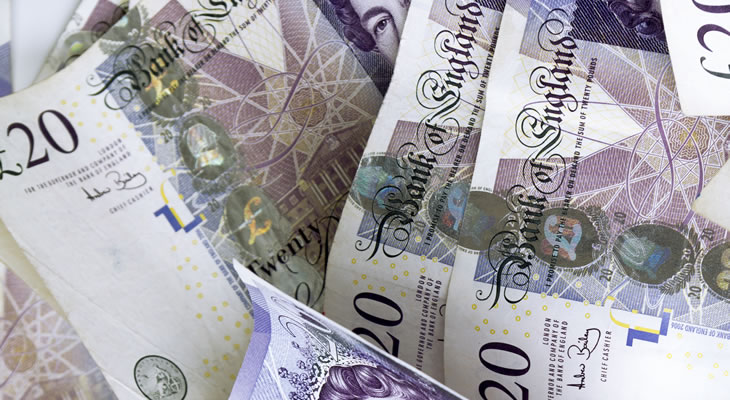Pound to Australian Dollar Exchange Rate Continues to Slide as Australian Data Impresses
Demand for the Australian Dollar (AUD) and risky trade-correlated currencies improved overnight, pushing the Pound Sterling to Australian Dollar (GBP/AUD) exchange rate lower following its Monday slide.
While GBP/AUD remains well above last week’s multi-month low of 1.7398, it has already fallen over half a cent from the week’s opening level of 1.7634. GBP/AUD hit a low of of 1.7539 this morning but trended closer to 1.7600 at the time of writing.
A slew of disappointing UK ecostats on Monday, as well as some better-than-forecast Australian stats on Tuesday, put pressure on the Pound to Australian Dollar exchange rate.
While demand for risky commodity-correlated currencies like the Australian Dollar has been mixed this week due to concerns about protectionist rhetoric from US President Donald Trump, risk-sentiment did improve slightly overnight.
The US and North Korea held an anticipated and mostly optimistic summit in Singapore. While not as big a step as some analysts hoped, it boosted market hopes that tensions between the nations were fading which made investors less hesitant to take risks.
Pound (GBP) Exchange Rates Weak as UK Production Data Shows Surprise Contractions
Britain’s economic rebound from a slow Q1 may not have been as strong as investors hoped – in fact some of yesterday’s ecostats indicated that the economy was performing well below expectations as recently as April.
April’s trade balance, industrial production, manufacturing production and construction output reports all disappointed investors on Monday.
Britain’s trade deficit unexpectedly deepened from £-3.22b to £-5.28b, while manufacturing and industrial production both came in with surprisingly deep month-on-month contractions.
Industrial production’s yearly figure was forecast to come in at 2.7%, but instead slumped from 2.9% to 1.8%. Yearly manufacturing production slumped from 2.9% to 1.4% rather than climbing to 3.1% as expected.
These results were followed by NIESR’s latest UK growth estimate. The group predicted that UK growth would only reach 0.2% in the three months into May, rather than the analyst consensus of 0.3%.
It indicated that Britain’s economic rebound in Q2 wasn’t much of a rebound so far, and Bank of England (BoE) interest rate hike bets slipped.
Australian Dollar (AUD) Supported by Data and Risk-Sentiment
News that leaders from the US and North Korea had formally met at a summit in Singapore was the talk of markets on Tuesday, and investors found the outcome to be generally optimistic.
North Korea reportedly agreed to work towards ‘complete denuclearisation’ and peace throughout Korea. This bolstered market hopes that tensions between the US and North Korea were lightening, and market demand for risky currencies rose.
On top of this, the Australian Dollar found some domestic support on Tuesday in the form of the nation’s latest home loans results.
While Australia’s latest business confidence results fell short with a figure of 6, rather than the forecast 9, the home loans figures for April lightened from -2.3% to -1.4% rather than the forecast -1.9%.
Investment lending for homes lightened from -9% to -0.9% in April.
Pound to Australian Dollar (GBP/AUD) Forecast: More Major Ecostats in the Coming Days
Demand for the Pound to Australian Dollar (GBP/AUD) exchange rate is likely to continue to be driven by notable ecostats over the coming days.
Australian consumer confidence for June and UK inflation results from May will be published on Wednesday.
This will be followed by Australian job market results and UK retail sales stats on Thursday.
In particular, Britain’s inflation and retail sales results as well as Australia’s job figures will be the most influential.
As UK data has disappointed recently, worse-than-expected UK inflation and retail sales would likely cause the Pound (GBP) selloff to continue and the Pound to Australian Dollar (GBP/AUD) exchange rate would see a week of losses.


Comments are closed.